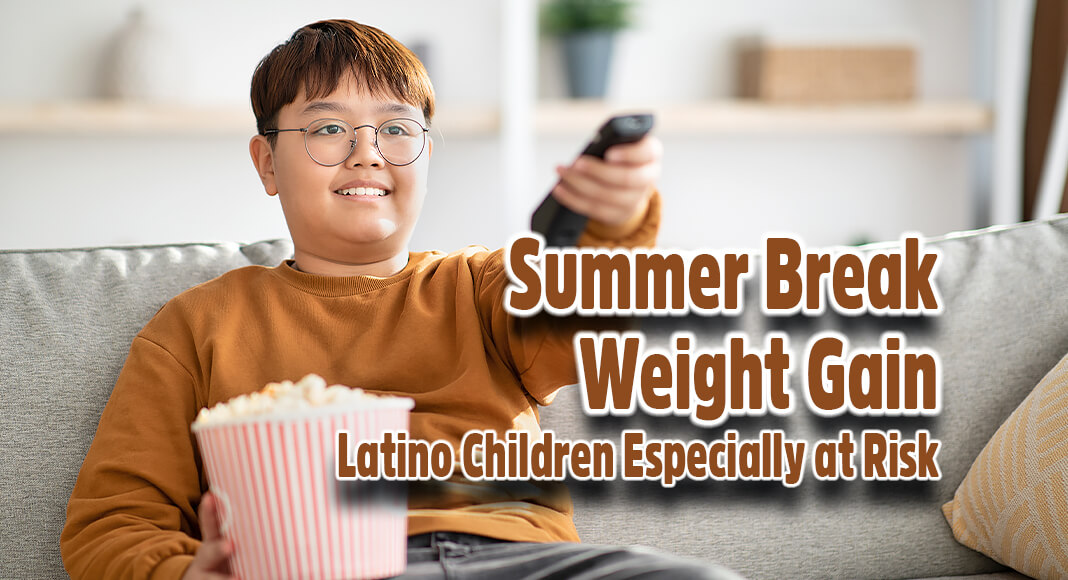
Mega Doctor News
By Lourdes Medrano, American Heart Association News
School’s out for the summer, and millions of children are home relaxing, working or frolicking in the sun. But, summer’s also a time when many kids can gain weight quickly – and at unhealthy levels.
The obesity rate for children in the United States has nearly quadrupled in recent decades, from about 5% in the 1970s to 19.8% – about 14.5 million kids – by 2020, American Heart Association statistics show. Obesity rates are disproportionately higher among Hispanic children, affecting about 30% of Hispanic boys and 23% of Hispanic girls. And research suggests Hispanic children may be more susceptible to summer weight gain than most of their peers.
“Childhood obesity has really tremendous implications for adult health,” said Eduardo Bustamante, an assistant professor of kinesiology and nutrition at the University of Illinois at Chicago. If left untreated, he said, obesity can continue into adulthood and lead to medical conditions such as high blood pressure, high cholesterol and Type 2 diabetes. It also has been associated with depression, anxiety and other mental health issues.
Obesity most often begins during adolescence, but it also can develop between ages 5 and 6, according to the American Academy of Child and Adolescent Psychiatry. But Bustamante said obesity can appear in Latino children as young as 2 years old. “The disparities emerge before kindergarten,” he said.
Children are considered to have obesity when their body mass index – a calculation based on weight and height – is at or above the 95th percentile among children of the same age and sex. Overweight falls between the 85th and 94th percentiles.
Factors that contribute to excess weight in children include a high-calorie diet, sedentary lifestyle, biological factors and genetic conditions. But, Latino youth with obesity also may face sociocultural, environmental and behavioral influences that prevent them from keeping a healthy weight, said Sharon Taverno Ross, an associate professor of health and human development and director of the Latino Family Health Laboratory at the University of Pittsburgh School of Education.
“They’re more likely to be living in low-income neighborhoods, more likely to be living in poverty” due to structural factors and systemic racism, she said. Their neighborhoods may be less walkable and have less access to physical activity resources and safe community areas, such as parks and playgrounds.
“People might have access to fewer grocery stores, so they’re buying food from corner stores or bodegas,” said Ross, who has a doctorate in behavioral health. Even during the school year, “the schools that are often attended by children who live in those low-resource neighborhoods might not have physical activity integrated into the day.”
Bustamante said financial stability plays a role in the disparities. Latino parents who work long hours or multiple jobs “are at their limit just trying to survive, just trying to make rent,” he said. Good health is a “far-off thing” that might not be possible.
Some summer activities that boost physical health are available to families for free or at low cost. Many camps currently may be full, but parents should check local YMCAs, The Salvation Army, Boy Scouts and Girl Scouts, public libraries and park districts. Many school districts provide free or low-cost healthy meals during summer to children, as do some community centers, food banks and places of worship.
Intervention programs that get kids more active or teach parents about healthier cooking can incorporate cultural values found in the diverse Latino communities, Bustamante said. “It has to be focused on what’s important to us and our goals, in my view. How can we use health behavior to achieve our goals?”
Bustamante leads a program at UIC that helps promote healthy home routines related to exercise, nutrition and sleep. Healthy Kids Lab also works to identify the type of support and resources families need to reach health-related goals.
Ross agreed that intervention programs may be key. But when Latino parents work multiple jobs and live in an environment that lacks nearby grocery stores with affordable, fresh and healthy food, families still “can’t get very far.”
Obesity among Latino children, Ross said, must be tackled across the various factors that can affect health. The voices of the Latino community should be included in decisions about interventions and policy changes, she said.
Parents are key to their children’s health behaviors, said Bustamante, who has a doctorate in kinesiology, nutrition and rehabilitation. “Children are constantly watching what parents do and emulating” those behaviors, he said. If children see their parents exercise and eat vegetables, they are more likely to follow suit.
Physical activity can go a long way in keeping children’s weight at healthy levels, Bustamante said. Only 16% of Hispanic youth ages 6 to 17 get the recommended 60 minutes of daily physical activity, AHA statistics show.
Bustamante suggests that parents develop a routine – both for the summer break and year-round – so children can be more physically active, eat more fruits and vegetables daily, sleep eight to 12 hours each night depending on their age, and spend less than two hours per day on recreational screen time.
“The health behavior benefits are unbelievable,” he said. “Brain development, behavior, focus, attention – every single part of the child benefits.”









